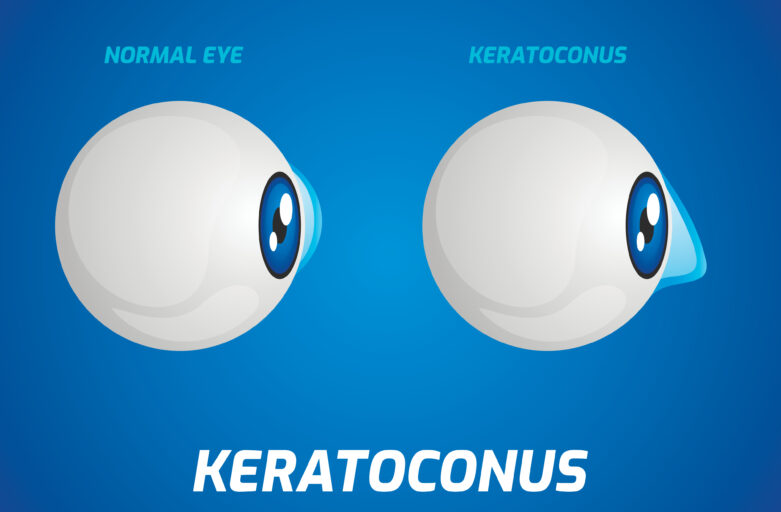Dr. Brian Boxer Wachler is one of the world’s foremost keratoconus specialists. With his proprietary non-invasive Holcomb C3-R® corneal cross-linking technique, he has found long-term success at not only halting keratoconus in its tracks, but also reversing the effects in many patients with Intacs and CK. Here, he shares facts about the treatment that may surprise his patients.
Corneal Cross-Linking Relies on Riboflavin
Riboflavin, better known as vitamin B2, naturally occurs in a variety of food sources like meat, dairy, eggs, asparagus and mushrooms. It is responsible for helping the body to break down carbohydrates, proteins and fats. More specifically, it is thought to strengthen the health of the eyes and prevent the development of cataracts. Because B2 dissolves in water, it is easy to put it into the eyes in drop form.
The Riboflavin Gets an Assist from UV Light
At Boxer Wachler Vision Institute, the riboflavin drops alone do not complete the process. Dr. Brian follows up by shining an ultraviolet light on the eyes to interact with the drops to create cross-linking. Normally it is important to avoid exposing the eyes to too much UV light, but in this case a small dose of UV light plays a critical role in fortifying the cornea and helping with stabilizing keratoconus.
Corneal Cross-Linking Can Be Combined with Corneal Inserts
When it comes to treating keratoconus, often the best path forward is not choosing between cross-linking and Intacs, but going with both options. In the vast majority of cases, Dr. Brian will use Intacs, which are clear semi-circles that fit along the edge of the cornea to help flatten out the extreme curvature of the eye caused by keratoconus.
There Is No Need to Worry about a Prolonged Recovery
By virtue of being a non-invasive procedure, the recovery period is a typically breeze with Holcomb C3-R. Although vision will be blurry for a day, patients who have corneal cross-linking are typically ready to resume normal activities by the following day.
Dr. Brian Invented the Non-Invasive, Epi-On Cross-Linking Technique
Nearly two decades ago, Dr. Brian created Holcomb C3-R® corneal cross-linking. Prior to that, corneal cross-linking was largely epi-off, which meant that an ophthalmologist would scrape off the epithelium from the cornea to perform cross-linking. Dr. Brian found an effective way to perform corneal cross-linking while leaving the epithelium on. No one in the world has performed this procedure longer than Dr. Brian.
Meet with Dr. Brian
The bottom line: If you have keratoconus and want to do everything in your power to preserve your eyesight, you should consider reach out to Dr. Brian, an expert who has spoken about keratoconus at conferences around the world and has written three books on this very subject. To arrange an appointment at his Beverly Hills office, please call (310) 860-1900.



